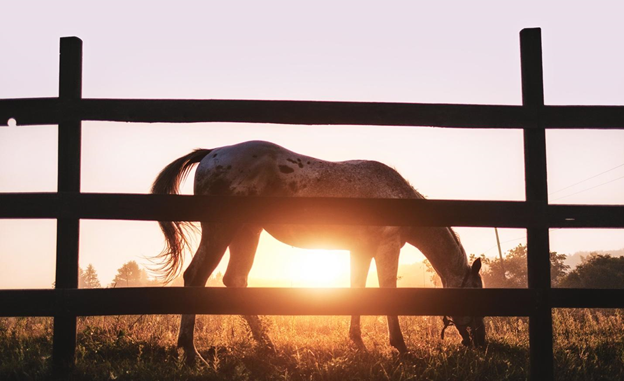
With Spring now upon us, horse enthusiasts are gearing up for the upcoming horseback riding and racing season. Yet for all the hype that’s building up around the Triple Crown and other notable events in this year’s calendar, there are plenty of fascinating facts about horses that go beyond the track and gambling. Here are ten such example:
Horseshoes
Did you know that a horse’s hoof is nothing more than a massive toe, strengthened by a thick layer of keratin – the same protein that makes up horns, hair, and nails? The oldest horseshoes ever found were dated to around 400 BC in what is present-day Italy. Over the centuries, an entire industry has evolved around equine foot care, with numerous styles of horseshoes, hoof boots for horses, and farriers to do the job.
The Eyes
Horses have the largest eyes of any land mammal. At slightly over 2 inches in diameter, it has a volume up to nine times larger than a human’s. Three eyelids cover their eyes. The third is located on the inner corner, and it’s used to sweep the surface of the eye, lubricating and cleaning it in the process.
Memory
A study from 2010 revealed that horses have incredibly long memories, probably even surpassing that of elephants. They can remember humans, and especially, their treatment of them, for years after they’ve been in contact.
Showing their Teeth
When horses curl up their upper lip and expose their front teeth for the world to see, many people believe it to stand for laughter. In reality, this gesture allows horses to better detect certain aromas of a more amorous nature. Stallions do this often, sensing other male rivals or mares in heat.
Multipurpose Ears
Besides using their ears to listen, horses also use them to communicate with each other. Studies have shown that horses base some their behavior on the position and orientation of other horses’ ears.
Close Relatives
Horses have very few living relatives. The Equidae Family comprises a total of just nine living species of horses, donkeys, and zebras. All other members of this family are now extinct. Their next closest related species are rhinos and tapirs.
Zebras Can’t Be Domesticated
Despite their visual similarities, zebras have completely different personalities, and habits to horses. Biologically speaking, they are more closely related to donkeys. Unlike wild horses, these traits make them impossible to domesticate. The environment in which they evolved has accustomed these striped beauties to be far more violent and unpredictable than their equine cousins.
Horses Can’t Vomit
Alongside most rodents and rabbits, horses are the only other mammal species that can’t vomit. Though useful in expelling any potentially-toxic substances, the horse’s body structure doesn’t allow for it. One proposed reason is that the back-and-forth movement while in full gallop could cause a horse to gag and vomit – which isn’t good when being chased by a predator.
Horses Made History
It’s safe to say human society would not be where we are today if it weren’t for the horse. From agriculture and sport to transport and war, horses have facilitated human development and the exchange of ideas, technologies, commerce and conquest.
Made in America
Few people realize that the horse originated in North America more than 4 million years ago. They crossed the Bering land bridge into Asia and disappeared from North America roughly 12,000 years ago. In other words, wild Mustangs are, in fact, a returned species, rather than an invasive one.
Horses are truly amazing creatures that have been our closest companions throughout history. They should be credited, at least in part, for our success as a species.
Photo by Bryan Minear on Unsplash

Be the first to comment